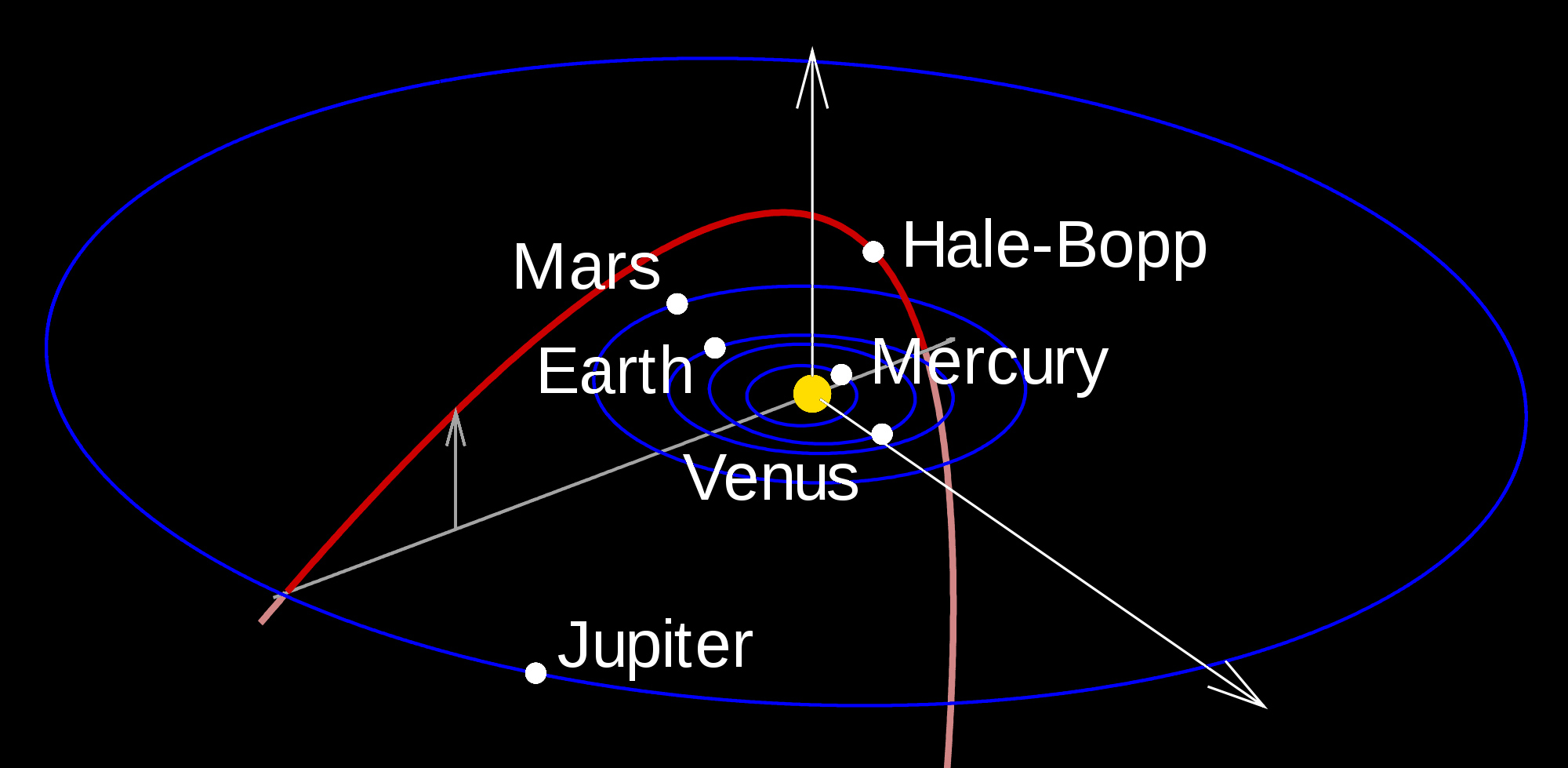The current estimate is circa 4380 CE. Hale-Bopp's orbital period was altered due to the gravitational effects of approaching Jupiter as closely as 0.77AU (1 AU = average distance between earth and sun) in April 1996. The orbital period before it approached the solar system planets was about 4200 years, which changed to 2380 years following the gravitational interaction with Jupiter.

Hale-Bopp is a long-period comet that was discovered in 1995 and that reached perihelion in Spring, 1997. Because it was much brighter than comets normally are when it was first discovered outside the orbit of Jupiter, there was considerable speculation that in the Spring of 1997 Hale-Bopp would be a spectacular sight.
Thus clearly since eccentricity of comet Hale-Bopp's orbit is 0.995 and greater, the Hale-Bopp's orbit has a more elongated orbit. Become a member and unlock all Study Answers Try it risk-free for. Halley's Comet or Comet Halley, officially designated 1P/Halley, is a short-period comet visible from Earth every 75–76 years. Halley is the only known short-period comet that is regularly visible to the naked eye from Earth, and the only naked-eye comet that can appear twice in a human lifetime. Halley last appeared in the inner parts of the Solar System in 1986 and will next appear in mid.
Concept: The sidereal orbital period of Hale-Bopp is given. Here is the universal gravitational constant, is the mass of the Sun, is the mass of Hale-Bopp and is the semi-major axis of its orbit. As the mass of Hale-Bopp is negligible compared to that of the Sun, we can drop in. Hubble Images of Comet Hale-Bopp Aug 02, 1998 This is a series of Hubble Space Telescope observations of the region around the nucleus of Hale-Bopp.
How Long Was Hale Bopp Comet Visible
Like most comets, Hale-Bopp also releases large jets of easily vaporized material when it approaches the sun. While predominantly H2O, many other compounds such as acetaldehyde, prussic acid, and hydrogen sulfide are also present in these jets. Even though such outgassing has been modeled, it introduces additional uncertainties to orbital period estimation.
Hale Bopp Comet Next Visit
This page was last updated on July 18, 2015.
